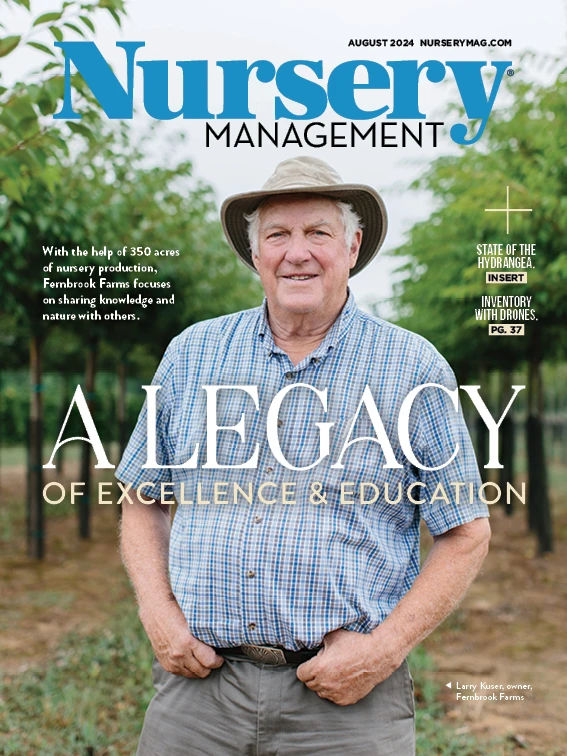
Photo courtesy of Andrea Filippone
NM: How did you get started in horticulture?
AF: I’ve been involved in horticulture since I was a little kid. My parents gave me a little window greenhouse, and I used to grow indoor plants and weed my parents’ best friends’ gardens. While I was in architecture school at the Harvard Graduate School of Design, I also took landscaping courses. I’m pretty much self-taught in horticulture. I read a lot; I observe. I love to go to different gardens, and I’m always asking questions. So why boxwood? Because boxwood enables me as an architect to create my interior rooms. I like to create structure in my landscape, and I like to create views out of the house into the landscape or draw the landscape into the house. I also like my landscape to look as beautiful in the wintertime as in the summertime, so I can’t do it without boxwood.
I had the luxury of meeting a woman that lived close by me. Her name was Aubrey Zaffuto, and she was on the board of the American Boxwood Society (ABS). When I bought my farm back in ’95, here in New Jersey, she asked if I would be willing to plant some boxwood here and do trials that were led by Paul Saunders of Saunders Brothers. And I said yes. So, she introduced me to boxwood at that time and introduced me to a significant number of cultivars. Because I like research, I was taken by challenging this plant by putting it in full sun, western exposure, western wind and then seeing how it performed — some in shade, some in semi-shade. There were no trees here, so it’s very exposed and on top of the hill. To my pleasant surprise, there were many cultivars, let’s say 80%, that did perfectly fine in full sun. I started to become very observant by looking at boxwood, and I became very close with Paul Saunders and the rest of the family. So, I continue to do those trials of different cultivars of boxwood to this day.
NM: What is your favorite part of being president of ABS?
AF: I’ve learned about this plant just by looking at it, and looking at it does not just mean how green the leaves are, how big the leaves are, how dark they are, but I look at the roots too. It’s the entire plant that I’m looking at. I like to look at the plant holistically. For me, the soil and the drainage are as important as what you see above the ground. That’s really what I like to teach people. Because of boxwood blight, there is now a lot more research in boxwood and how even fertilizers make the plant more susceptible to boxwood blight. So, for me, educating people on how to manage this plant properly is what I live for.
NM: What major initiatives is ABS working on?
AF: We’re trying to organize different events in and around the United States. The ABS started as an organization based in Virginia, and my goal is to make it more far reaching within the U.S. So, we are trying to get members and board members from different parts of the U.S. We want the board to be a mix of horticulturists, people in charge of gardens that have large boxwood collections and people that are doing research on boxwood. We’ve been reaching out to growers and to organizations that are invested in boxwood.
NM: Why it is important for nurseries to support and/or join industry-specific organizations?
AF: Boxwood is one of the best-selling plants in the U.S. It’s important for us to stay connected and work together to combat the boxwood tree moth. If we work together, it will not spread across the U.S. the way it has in Europe. Nobody wants to be impacted by this financially, and nobody wants to scare away the public from purchasing it. So, we’ve got to be smart in terms of how we tackle this, and boxwood tree moth is easy to tackle if you know what to look for and if you deal with it quickly. If we work together, we can keep this industry moving forward in the right direction.
Get curated news on YOUR industry.
Enter your email to receive our newsletters.
Explore the August 2024 Issue
Check out more from this issue and find your next story to read.
Latest from Nursery Management
- Sam Hoadley talks about Mt. Cuba Center's latest evaluation of Solidago sp. for the Mid-Atlantic region
- Countdown to shutdown
- From growing plants to growing people
- Weed Control Report
- Advocacy in action
- Rare Life Plants: A place for the unique
- Crisis of confidence
- A letter from the sponsor: Janna Beckerman, Envu






